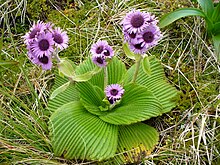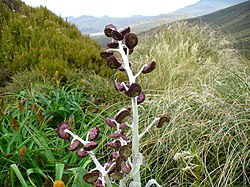| Pleurophyllum | |
|---|---|
 | |
| Pleurophyllum speciosum | |
| Scientific classification | |
| Kingdom: | Plantae |
| Clade: | Tracheophytes |
| Clade: | Angiosperms |
| Clade: | Eudicots |
| Clade: | Asterids |
| Order: | Asterales |
| Family: | Asteraceae |
| Subfamily: | Asteroideae |
| Tribe: | Astereae |
| Subtribe: | Celmisiinae |
| Genus: | Pleurophyllum Hook.f. [1] |
| Synonyms [2] | |
| |
Pleurophyllum is a genus of subantarctic plants in the tribe Astereae within the family Asteraceae. [3]
Pleurophyllum is native to the subantarctic islands of New Zealand (the Auckland Islands, Campbell Island and the Antipodes Islands) and Australia (Macquarie Island).
- Species [2]
- Pleurophyllum criniferum Hook.f., = P. oresigenesum, Albinia oresigenesum
- Pleurophyllum hookeri Buch.
- Pleurophyllum speciosum Hook.f.
